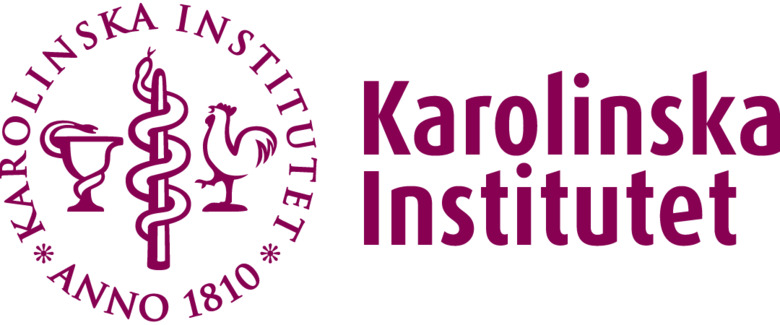In Sweden, more than 18,000 people suffer an acute ischaemic stroke every year. With correct and rapid treatment of stroke, both lives are saved, and the affected person can avoid lifelong disability, something that both provides increased quality of life for the patient and saves big money for society. The new treatment options that have emerged over the past decade require more knowledge in healthcare, which is one reason for the new course offered through MedTechLabs.
The course “Acute stroke, diagnostics and treatment” organised by MedTechLabs started in October 2023. The course is aimed at residents and specialists who want to train in this area to better follow the national recommendations and guidelines for examination and treatment of stroke and TIA. The new course was offered to doctors in Region Stockholm as well as in other parts of the country and was quickly oversubscribed.
We spoke with Håkan Almqvist, senior physician and neuroradiologist at Capio St Göran, who is responsible for the course. Håkan has worked almost all his professional life with stroke, first at SÖS and later as a neuroradiologist at Karolinska and has followed the modern development of how to find and eliminate thrombi/embolisms since the late 90s.
Hi Håkan, can you tell us a bit about the course and why it is given?
“The course aims to provide knowledge about the benefits of acute reperfusion therapy within 24 hours in several patient groups, including those with relatively large established infarcts. The management and assessment of TIA is also included in the course. “The biggest problem with stroke care is still that patients come in too late, so it’s important that everyone in the community knows that help is available and picks up the phone if they have symptoms. But we in the healthcare chain also need to be on our toes and know what is needed for the patients. We must dare to be rational and inclusive, even if there is a low probability of stroke. Because it can be difficult to know whether your judgement is correct. Doctors need to see many cases to become skilled in their judgement and that takes time, especially in a smaller hospital.”
How do you deliver the course?
“In the first round, we offer it free of charge to 40 participants who receive around 30 video lectures and case study material with commentary, which we distribute using Collective Minds Radiology and their radiological imaging system. It is up to the student how much time they spend on that part, but I would say it is about two and a half days, at their own pace. In addition to this, we have a mandatory physical meeting in the form of a seminar in Stockholm where case studies are discussed. The knowledge check takes place at this seminar and active participation is required to obtain the course certificate.”
Who came up with the idea for this course?
“Many of us realised early on that there was a lack of continuing education for the new forms of examination and treatment that have emerged in the field. When MedTechLabs started, it was realised that there was a need for training in the region. Professor Staffan Holmin, together with KTH professor Mats Danielsson, saw an opportunity for the centre to contribute to and provide training. “As early as 2018, we started recording parts of the material that is now used in the course, along with new material in 2023. The pandemic and questions about which platform to use have meant that it has taken some time.”
What do you think has made the course so popular?
“The course only corresponds to a few days where you choose when for about 1 month. That certainly has an impact. But it is up to the student how much time they spend. I think long courses are becoming more difficult to attract. That we have a hybrid approach with self-study with lectures and being able to browse cases combined with a physical seminar with the teachers. A course must also be able to provide both a course certificate and an ST certificate. This is probably exactly what many doctors are looking for in terms of continuing education.”
When will you hold the course next time?
“This is the first time we have held it, and we will of course further develop it based on the feedback we receive from the course participants. Then we will see how many times a year is reasonable. It is also a question for Region Stockholm, which this time allowed doctors from other regions to attend free of charge. But hopefully we will also organise the course in 2024.”
MedTechLabs has granted SEK 35 million for two new medical technology research programmes. The first will develop a new method for monitoring fetal oxygenation during labour. The second programme will develop a new method for early diagnosis of brain diseases using MR elastography.
This year’s call from MedTechLabs was launched in the spring and the decision to adopt two new research programmes was taken by the centre’s steering committee in early October. Johan Schuber, Executive Director of MedTechLabs, says that the approved programmes strengthen the centre’s focus on conducting clinically relevant research.
Current fetal monitoring methods have weaknesses and the researchers in this new programme aim to improve them to reduce the risk of organ failure in the baby during delivery. This is an important area of research that affects many patients and maternity services, not only in Sweden but also worldwide.
The programme ‘Continuous lactate measurement and prevention of fetal hypoxia during delivery’ is led by Malin Holzmann, Karolinska Institutet (KI), and Saul Rodriguez Duenas, Royal Institute of Technology (KTH). Malin Holzmmann is a senior physician at the Unit for Pregnancy and Childbirth at Karolinska University Hospital in Solna, Sweden, and an associate professor at KI. Saul Rodriguez Duenas is a senior lecturer at the Division of Electronics and Embedded Systems at KTH. The goal is to achieve continuous lactate measurement during labour, which would represent a completely new technology in healthcare with the potential to fundamentally change fetal monitoring.
The second research programme focuses on understanding how brain tissue changes when exposed to diseases such as Alzheimer’s, Parkinson’s, MS, or brain tumours. With the increasing availability of drugs to treat these diseases, early detection of the diseases in time is becoming more important to slow down disease progression as effectively as possible.
The programme “Clinical application of next-generation brain magnetic resonance elastography for neurodegenerative diseases and brain tumours” is led by Rodrigo Moreno, KTH and Tobias Granberg, KI. Rodrigo Moreno is Associate Professor and Senior Lecturer at the Department of Biomedical Engineering and Health Systems at KTH. Tobias Granberg is Senior Lecturer at the Division of Clinical Neuroscience at Karolinska Institutet. MR-Elastography (MRE) is already used today to diagnose liver diseases, but its complexity has so far hindered its clinical use for the diagnosis of brain diseases. The main objective of this multidisciplinary programme is to enable MRE to be performed also for the brain and to evaluate its clinical utility in neurodegenerative diseases and brain tumours. The project covers MRE technology from image acquisition and analysis to its use and evaluation in clinical trials. The goal is to enable clinical implementation in Region Stockholm within five years, thus contributing to better treatment for patients.
Research in both programmes is expected to start in January 2024.
MedTechLabs is an interdisciplinary centre for patient-oriented research that will contribute to breakthroughs in the development of medical technology with significance for the important challenges of healthcare and our major public diseases. In all programmes, researchers and clinicians with both technical and medical expertise collaborate. The centre is run jointly by KTH, Karolinska Institutet and Region Stockholm.
For more information, contact:
Johan Schuber
Executive Director of MedTechLabs
Phone: 08-790 67 64
E-mail: jschuber@kth.se
Website: www.medtechlabs.se
LinkedIn: https://www.linkedin.com/company/medtechlabsstockholm
SVT – the Swedish national broadcasting company – highlights the impact of research on AI for breast cancer detection in mammography, conducted by MedTechlabs researchers Kevin Smith and Fredrik Strand. Also, Lancet published a scientific article on the study conducted at Capio Sankt Göran Hospital in Stockholm.
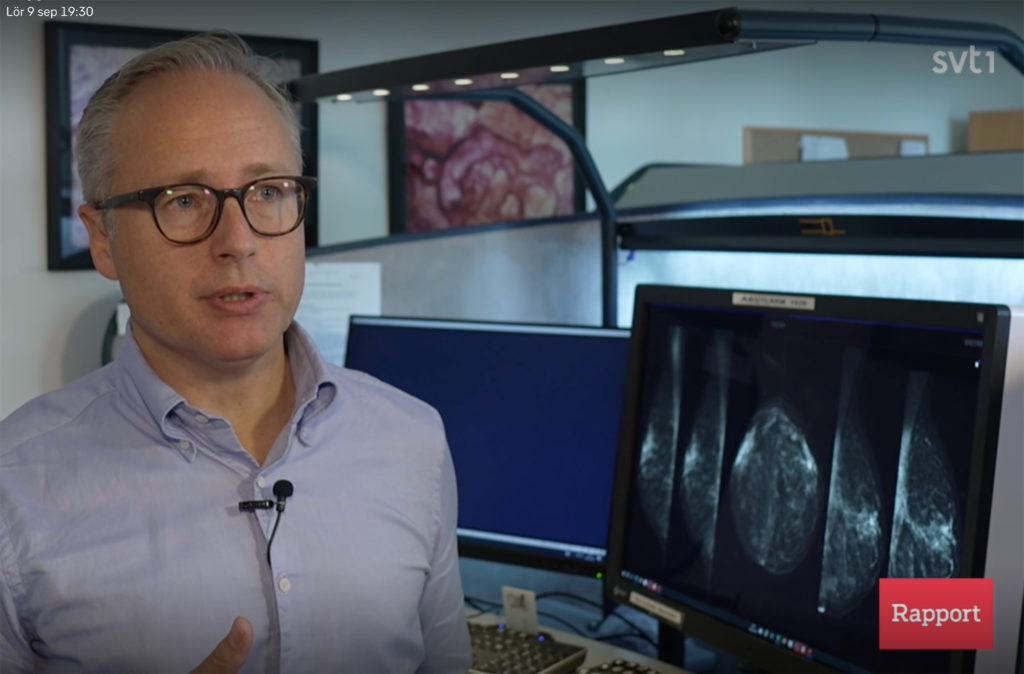
What differences in cancer detection and unnecessary recalls are the results of various combinations of AI and radiologists? Lancet Digital Health has published the results of a prospective clinical trial conducted in Stockholm.
MedTechLabs researcher Fredrik Strand is surprised at how accurate the AI was and says that the potential for AI to handle most of the screen-reading is huge.
Karin Dembrower is chief physician and medical director of the Mammography Department at Capio S:t Göran’s Hospital where the clinical study was conducted. She is very satisfied with the results.
– We found slightly more cancer and recalled fewer women who turned out to be healthy, so we made fewer women worried. And we freed up time for the radiologists to do other diagnostics than looking at mostly healthy women’s images. We have managed to cut the queues considerably so we are a queue-free breast centre now, she says in the feature.
The AI-assisted breast cancer detection system has been operational since summer 2023 at St Göran’s Hospital in Stockholm.
– We have shown that our AI technology works on St Göran and their equipment. But that doesn’t mean that any AI will work on all equipment, so it’s something you need to check before introducing it, says Fredrik Strand in the same feature.
Watch the tv-feature here (in Swedish)
Read the Article in Lancet Digital Health here (full text)
On the 24th of August MedTechLabs were proud to be among the medical research facilities in Stockholm and Uppsala to host a visit by GE Healthcare Top Management. Their team was happy to see the progress of the world’s first clinical evaluation of the Deep Silicon CT detector technology for photon counting CT here at BioClinicum in Hagastaden.
Peter J Arduini, President and CEO at GE Healthcare later stated:
“I spent time in my early GE HealthCare career working in CT. This week, it was thrilling to be at the epicenter of this exciting innovation, and I look forward to the potential transformation it will create for CT and the benefit for patients worldwide. Photon counting has the promise to further improve the capabilities of traditional CT and increase imaging performance for oncology, cardiology, neurology, and many other clinical CT applications.”
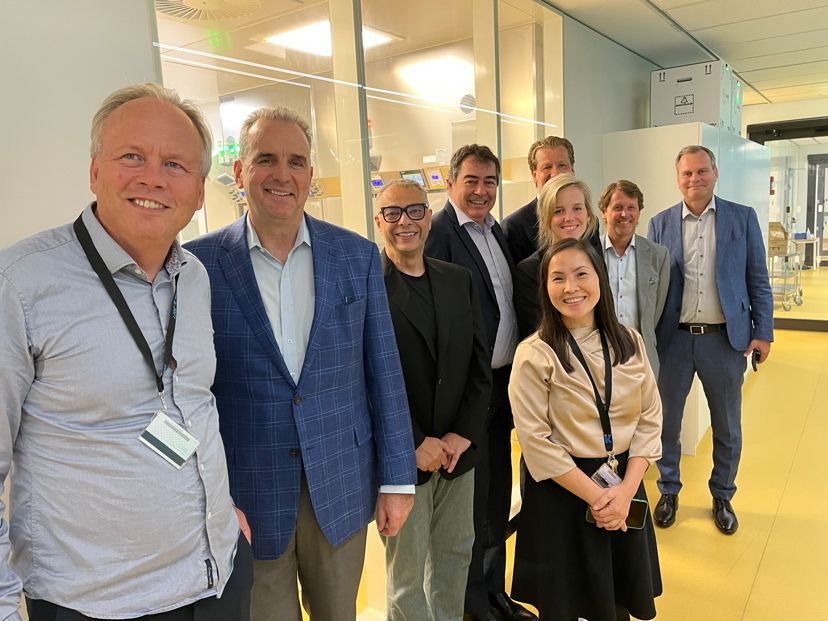
Do we have the right organisation for highly specialised care in Sweden, with seven university hospitals competing for highly specialised assignments?
That question was debated at the Almedalen seminar where Staffan Holmin and Mats Danielsson participated: “From frontline to routine care. How to create the cutting-edge healthcare of the future?”. The panel also included Acko Ankarberg Johansson, Minister of Health, Björn Zoëga, Hospital Director, Karolinska University Hospital, and Annika Östman Wernerson, President of Karolinska Institutet, Olivia Wigzell, Director General, National Board of Health and Welfare.
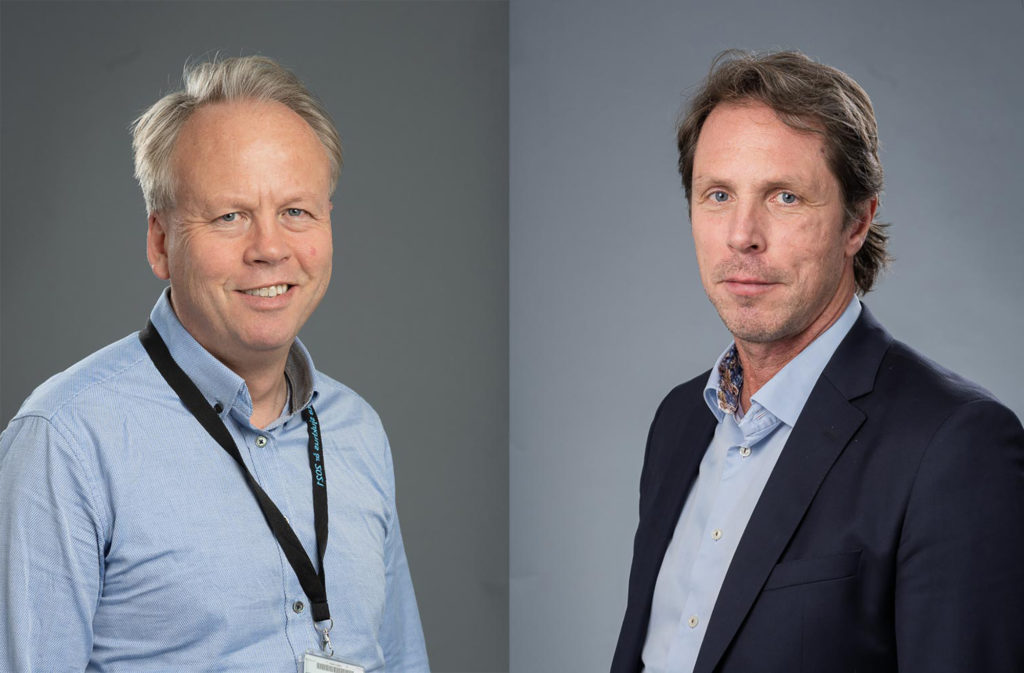
The seminar was organised by the Karolinska University Hospital and Dagens Medicin Sverige. Nina Hedlund was the moderator. Here is a web link to the seminar (which was held in Swedish): https://lnkd.in/gih5QWay
In episode no 121 of Karolinska Institutet’s podcast Medicinvetarna, Magnus Boman gives his views on potential applications and ethical challenges in the use of AI in medicine and research.
On behalf of the MedTechLabs steering committee, Magnus Boman is mapping healthcare needs in terms of AI, and possible synergies between research centres and suggests training courses in the area that MedTechLabs should be responsible for.
You can find the episode here (in Swedish).
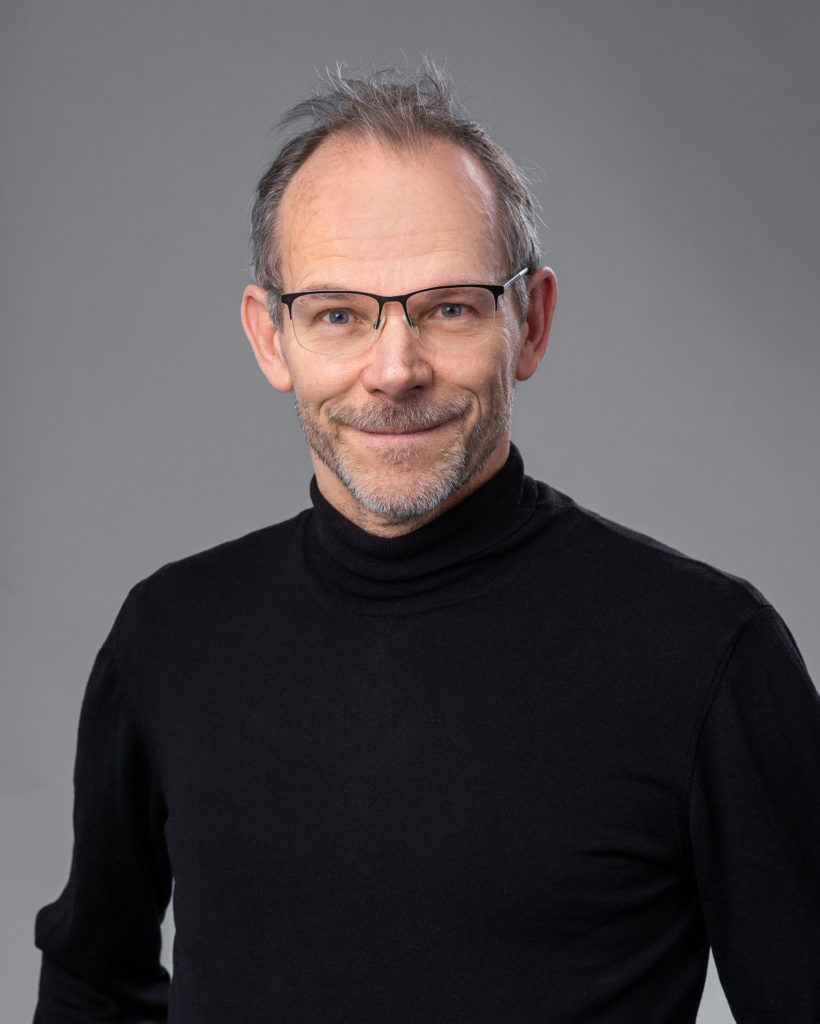
Associate Professor Peder Olofsson, Department of Medicine, Solna, Karolinska Institutet, and MedTechLabs research leader, receives the Heart-Lung Foundation’s major research grant of SEK 15 million in 2023. He receives the grant for his research on the stimulation of the nervous system for the treatment of atherosclerosis.
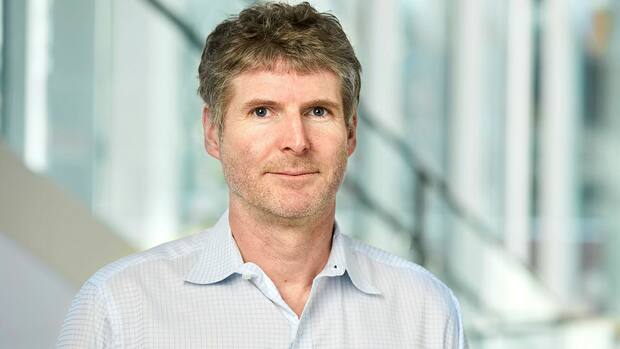
Cardiovascular disease, of which atherosclerosis is an important cause, is the most common cause of death in Sweden and worldwide. Peder Olofsson will use the grant to investigate whether it is possible to reduce atherosclerosis by stimulating the body’s own nerve reflexes.
“Our goal is to develop new treatments for cardiovascular disease that utilise the body’s own nerve reflexes. It is important to better understand how the nervous system regulates atherosclerosis and vascular inflammation – key causes of heart attack and stroke. This can open up completely new approaches and specific treatment of hitherto unknown disease mechanisms,” says Peder Olofsson, in a press release from the Swedish Heart-Lung Foundation.
A new centre that brings together current and future expertise and technology in medical imaging. Expectations for the Centre of Imaging Research (CIR) and what it can achieve in terms of research, industry collaboration and clinical application are sky-high. In this article, Daniel Lundqvist, who heads the centre, talks about how the CIR will make its mark in Sweden and internationally.
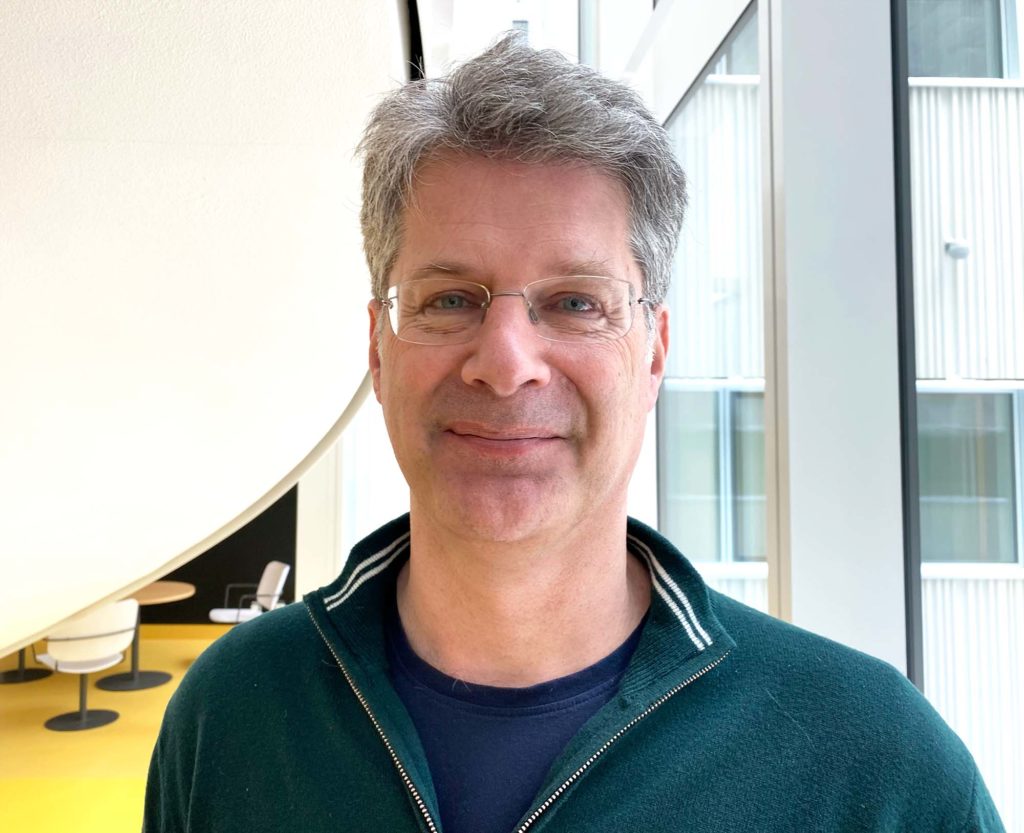
Daniel Lundqvist formally became director of CIR - Centre for Image Research - in October 2022. The importance of the new centre was marked by the participation of both Karolinska Institutet's President Ole Petter Ottesen and Karolinska University Hospital's CEO Björn Zoëga in the inauguration. Most of the centre is in Karolinska University Hospital's BioClinicum research building, which is also well integrated with KI. MedTechLab's CT lab is now part of the CIR infrastructure. One block away is the Scilifelab, which also conducts research in the field of imaging. Daniel Lundqvist is a brain researcher at KI and has a passion for medical infrastructure. He explains that the first thoughts of a single imaging centre came more than 20 years ago, and that brain researcher Martin Ingvar, former head of the MR Centre, and Staffan Holmin, physician and research leader at MedTechLabs, were among those who started working on realising the ideas early on. The CIR will bring together the best instruments, platforms, and technologies available in medical imaging, and Daniel has started building the centre's structure and initial operations. – In addition to the co-location, we have upgraded with the latest in medical imaging technology. But I want to emphasise that as important as it is to have all this great technology in one place, it is equally important to bring together all the experts in the field of imaging so that they can collaborate and learn from each other, Daniel explains. By bringing these people together, level four of the BioClinicum also forms a professional community that is unparalleled in the world. The CIR is likely to be attractive to researchers internationally, which will benefit recruitment to research projects linked to the centre. One goal of the CIR is to create benefits for users in research, healthcare and industry. The centre makes it possible to devote resources to their common needs, such as a new platform for storing and sharing image data, which would have been difficult for the various users to create on their own. The activities at CIR will contribute to the translation of research results into clinical activities, known as translational research. This is facilitated by the proximity to Karolinska University Hospital, which is just a stone's throw away with its doctors and patients. CIR is partly based on imaging facilities that have already existed for a long time at Karolinska Institutet and Solna University Hospital. What is new is that these are being brought together physically. An important reason for establishing the centre was the realisation of how important it is to be able to perform multimodal imaging, i.e., to combine different types of imaging. Today, this is a logistical challenge when facilities are scattered in different locations, and it also puts a strain on patients or research subjects when they must be moved around. Surprisingly rarely, for example, MRI, MEG, PET and CT are combined on the same individual, even though it is often important to obtain a detailed and multifaceted overall picture. The CIR will therefore enable a wide range of imaging of the structure, function, and metabolism of living organs, using the various modalities of technology available and constantly evolving. The diagnosis and study of cancer, cardiovascular diseases and brain imaging are the focus. For example, NatMEG, a national infrastructure for magnetic encephalography that is one of the most advanced in the world, will be part of the centre. One of the CIR's strengths is that we have the very latest or even tomorrow's methods that we are evaluating and trying to utilise. Such as the new photon counting CT technology with silicon detectors that is now being validated in MedTechLabs and a new MRI with ultra-high field strength, called 7-tesla, which is available in Huddinge. - We are currently upgrading NatMEG with an improved system for measuring brain activity with a 128-channel system for on-scalp MEG. This is the latest and greatest in the world," says Daniel. The centre's ability to provide researchers and clinicians with more information about the appearance, function and metabolism of organs can be of great importance for individual patients with severe diseases. Daniel takes epilepsy as an example: - In the brain, epileptic seizure activity can begin as an intense activation of a very small cortical region, which then expands over time to involve progressively larger and larger cortical areas. If a patient needs surgery to remove the part of the brain where seizure activity starts, one will naturally want to identify the exact starting point as accurately as possible. With the technology available at CIR and NatMEG, we believe that it will be possible to find the seizure activity’s starting point more accurately and thus the method can also guide the neurosurgeon with greater certainty, says Daniel. Another exciting area where CIR could play an important role is theranostics, which combines therapy and diagnostics. Theranostics uses a targeted radiopharmaceutical that can identify and diagnose the extent of a cancer, and then treat the cancer either with a therapeutic radiopharmaceutical (or with targeted oncological treatment). This method successfully improves the effectiveness of cancer treatment while maintaining quality of life. The field is relatively new and rapidly developing. Sweden has an internationally prominent position in the field, and is among the most active countries in Europe, both in the preclinical development of theranostic drugs to translating and participating in clinical theranostic studies and in initiating them. Nationally, there are many links to CIR and Daniel is already involved in several Swedish coordination projects where the focus is on sharing and making data available. Internationally, the centre will also be an important Swedish node for various research collaborations, such as the European e-infrastructure for brain research, EBRAINS. Synchronising CIR with EBRAINS will make it easier for CIR's imaging platforms and users to share and use data in European collaborations between researchers, clinicians, and industry. - It has taken a while to realise what a great job I have been given and I am both proud and humbled by this assignment. Since I have worked with imaging issues and imaging infrastructure for a long time, I know that it can be challenging and involves a lot of responsibility. But it is so exciting to be involved in creating something that offers new and unique opportunities that will ultimately benefit healthcare and patients. I share this feeling with many others who will work here at CIR, concludes Daniel.
New collaboration in radiology. MedTechLabs has chosen Collective Minds Radiology for its investment in teaching in acute stroke. The contract is for three years and allows the platform to be used for other areas as well. The idea is that the new cloud technology will both contribute to faster implementation of new treatment methods and increase interest in radiology among younger physicians.
MedTechLabs focuses on major diseases, such as cancer and stroke, and is located next door to the new Karolinska University Hospital in Solna. An important goal is to ensure that research results are quickly used in healthcare. With the cloud service from Swedish Collective Minds Radiology, MedTechLabs will now offer the further developed e-course “Acute stroke treatment within 24 hours – decision support with perfusion”, led by Håkan Almqvist, senior physician, and specialist in neuroradiology at Capio St Göran. The target group is students in the residency program in radiology and active radiologists throughout Sweden.
– The collaboration is a good example of how MedTechLabs collaborates with other life science actors to disseminate research results and increase implementation in Swedish healthcare. Collective Minds Radiology got its start at KI Innovation and MedTechLabs has its premises and CT lab directly adjacent to Karolinska University Hospital, five minutes from the hospital’s clinical activities, says Håkan Almqvist.
The agreement between MedTechLabs and Collective Minds Radiology runs for three years and means that other projects within MedTechLabs can also use the platform to share and interact with radiological images in a secure way. With a growing elderly population, increased digitization in health care, and the new opportunities in diagnostics that technological development brings, it is important that researchers and clinicians get better tools to collaborate on radiological images.
– Collective Minds Radiology was founded with the vision of building the world’s largest platform for collaboration in health, starting with radiology. Today we are a hub for collaboration between academia, healthcare and business, all of which need each other, explains Anders Norell, co-founder and CEO of Collective Minds Radiology.
With new advances in medical research, there is a growing need for education where radiological images are central to learning. “However, there is a shortage of skilled radiologists in Sweden, which is a problem for the healthcare system,” explains Niclas Roxhed, Director of MedTechLabs.
– By launching our redesigned e-course on this modern platform, we also hope to increase interest in the field of radiology among the doctors who are currently training. Ultimately, it is crucial for academia, hospitals, and medical technology companies that we secure tomorrow’s competence in radiology, concludes Niclas Roxhed.
The e-course “Acute stroke treatment within 24 hours – decision support with perfusion” will be launched on Collective Minds Radiology’s platform during the year and will be free of charge for healthcare professionals in Region Stockholm and available for the entire Nordic region.
Close on June 7th. MedTechLabs announces a call for funding of research programs in the areas of (1) Precision health and (2) Data-driven healthcare research.
The research should be focused on medical technology with clear clinical applications for preventing and treating widespread diseases. The call opened on April 4th and closes on June 7th, 2023. The estimated project start is January 1st, 2024. Johan Schuber, Executive Director for MedTechLabs, is in charge of the process.
Read more.

